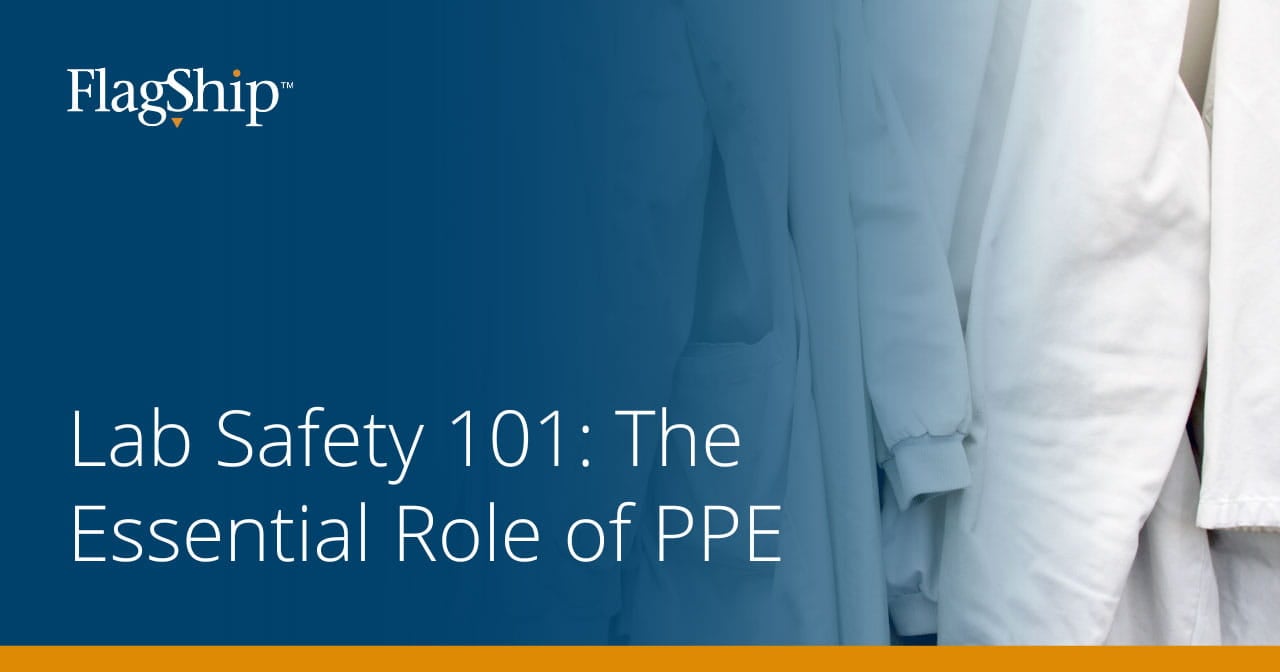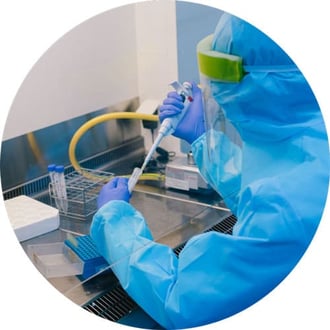
Personal Protective Equipment, or PPE, serves as your scientists’ first line of defense against hazards in the lab. In their quest for discovery, they frequently come into contact with substances, organisms, and equipment that pose potential hazards. PPE not only ensures their safety, but also helps to maintain the integrity of experiments.
In this blog post, we’ll explore different types of PPE, the critical role it plays in lab environments, and tips for its proper use and maintenance.
Common Types of Laboratory PPE
PPE requirements will vary considerably depending on the nature and focus of the lab. A biohazard lab, for example, might require specialized respirators, whereas a chemistry lab would require chemical-resistant gloves. But there are several PPE staples that can be found in most labs, including:
- Lab coats or gowns: Protect against spills and splashes.
- Safety goggles or face shields: Guard the eyes from chemical splashes or flying particles.
- Gloves: Different types of gloves exist for handling chemicals, biological samples, and hot or cold objects.
- Respirators and masks: Filter harmful particles or noxious fumes.
- Protective footwear: Prevents injuries from dropped objects and chemical spills.
- Ear protection: Protects ears when working around loud equipment or machinery.
The Purpose of PPE
 Whether your lab contains volatile chemicals, infectious pathogens, or high-powered machinery, risk is inherently present. PPE serves as the primary barrier between your scientists and any potential hazards. For example, a pair of safety goggles can be the difference between a routine experiment and a life-altering eye injury.
Whether your lab contains volatile chemicals, infectious pathogens, or high-powered machinery, risk is inherently present. PPE serves as the primary barrier between your scientists and any potential hazards. For example, a pair of safety goggles can be the difference between a routine experiment and a life-altering eye injury.
To navigate risks effectively, it’s imperative that you have stringent requirements in place regarding the use of PPE. Establishing and enforcing these standards not only underscores your commitment to your lab personnel but also ensures the integrity and validity of the research being conducted in your lab.
Contaminants, chemical or biological, can compromise experimental results. By wearing appropriate PPE, your researchers can guarantee that their work remains uncontaminated and that conclusions drawn are based on the intended conditions and variables.
In addition, the Occupational Safety and Health Administration (OSHA) has set strict standards for the use of PPE in lab settings. Adhering to PPE guidelines will ensure that you remain in legal compliance and avoid unwanted fines and research penalties.
Tips for Proper PPE Usage
Merely having PPE on site doesn’t equate to a safe lab environment; it must be worn properly to ensure your scientists’ protection. It's crucial that you not only equip your personnel with the necessary PPE, but also that you instill a culture where its proper and consistent use is non-negotiable. Flagship Lab Services offers several tips for using and maintaining PPE.

Choose Wisely
Selecting the appropriate PPE is pivotal to ensuring maximum protection in the lab. Given the varied nature of experiments and the hazards they pose, it's imperative that researchers carefully assess the tasks they're about to undertake. A procedure involving corrosive chemicals may necessitate chemical-resistant gloves, while one with airborne particulates would call for a specialized mask or respirator.
Follow Maintenance Guidelines
Like lab equipment, the efficacy of PPE depends on its condition. Regular cleaning and appropriate storage will help prolong the lifespan of your PPE and ensure that it functions optimally when in use. By adhering to manufacturer guidelines, you can be confident in the protective capabilities of your PPE.
Know When to Replace
Over time, wear and tear can degrade PPE’s protective qualities. A glove with a minor tear, for instance, might expose the skin to harmful chemicals. It's essential for lab personnel to regularly inspect their PPE for any signs of wear or damage. Recognizing when an item has surpassed its protective lifespan and replacing it promptly is crucial to maintaining safety.
When researchers neglect to use PPE properly, they compromise their health and the accuracy of research outcomes. By implementing and enforcing PPE protocols, you can affirm your dedication to a culture where safety and science go hand in hand.
Flagship Lab Services introduces the people, processes, and data your lab needs to achieve both safety and quality control. Not only do we offer expertise in developing SOPs and safety measures, but we also provide valuable data insights to facilitate evidence-based decision-making and continuous improvement. For more information about our cutting-edge lab services, visit our services page.





Leave a Comment